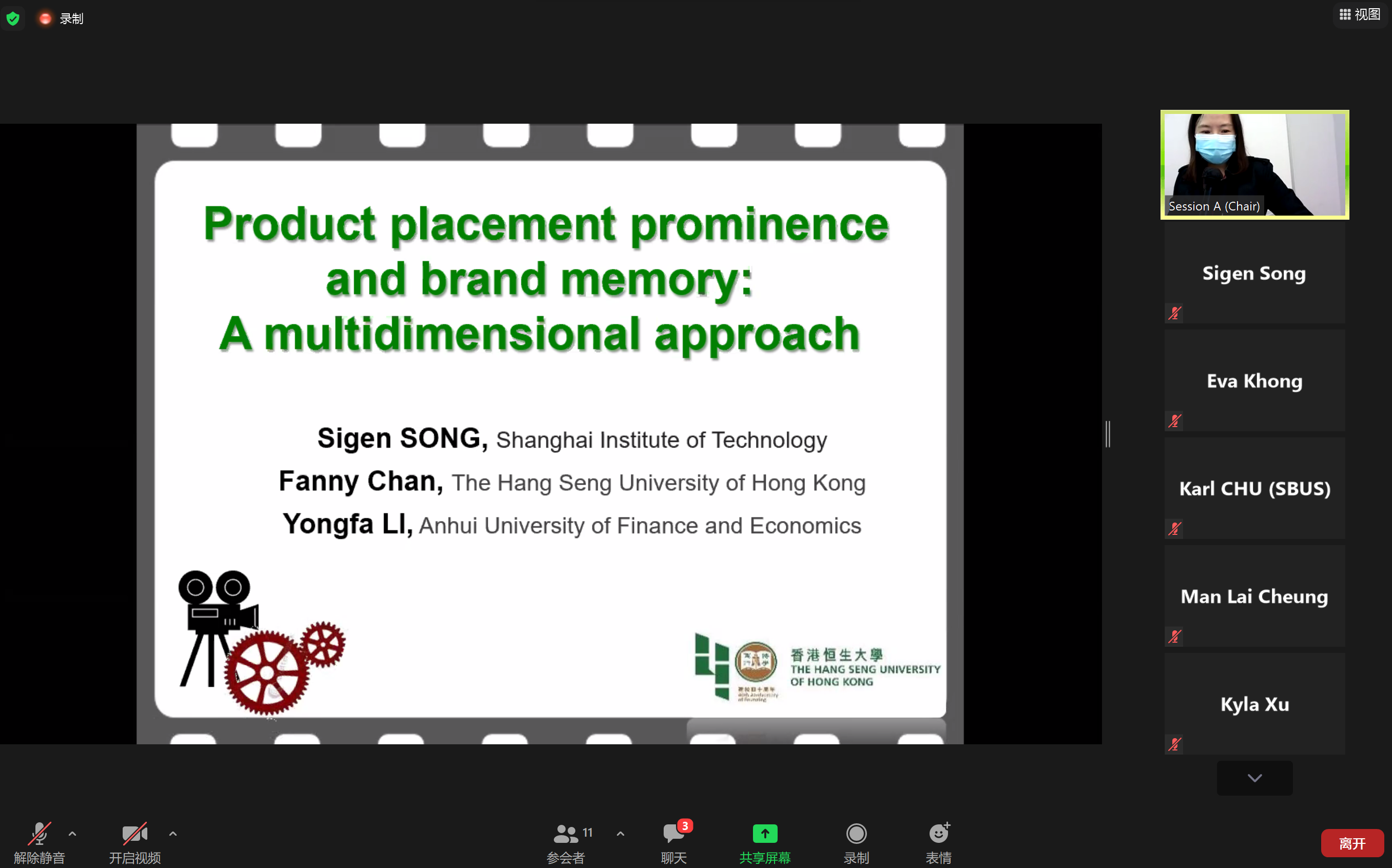
12月5日,宋思根教授在线参加了在香港恒生大学举办的2020国际商务学会(AIB)东南亚地区会议。他与合作者陈芳怡博士(香港恒生大学)、李永发教授(安徽财经大学)提交了论文“植入式广告显著性与品牌记忆:一项定性比较分析”,并受邀在小组演讲。陈博士代表论文作者作现场陈述,并通过Zoom会议系统进行了线上直播。
针对已有研究未能检查植入式广告各种维度(时长、尺寸、位置等)组合对植入品牌记忆的效果,该项研究使用了六部微电影,系统检验了植入式广告15个维度特征的组合效果。结果显示:15个维度特征可以被降维为五个因子,即情境、情节、感官、曝光和空间。运用定性比较分析方法计算了五因子对品牌记忆最佳或最差效果的组合。在不同性别受众和不同熟悉度品牌之间检验最佳组合效果的稳健性,结果与理论预期基本一致。该项研究预期可进一步加深了学界和业界对植入式广告显著性对品牌记忆影响的理解。
On December 5, 2020,Professor Sigen SONG attended the 2020 Academy of International Business (AIB) Southeast Asia Regional Conference online organized by The Research Institute for Business (RIB) School of Business, The Hang Seng University of Hong Kong. He and co-authors, Fanny Fong Yee CHAN (The Hang Seng University of Hong Kong) and Yongfa LI (Anhui University of Finance and Economics), submitted a paper titled “Product placement prominence and brand memory: A qualitative comparative analysis”. They were invited to represent this paper on Session 5A. Dr. CHAN made the representation online and offline simultaneously.
Abstract: Product placement is a hot research topic in the past two decades and prominence is a frequently explored execution characteristic. Prominence is a multi-dimensional concept. However, previous studies have defined and operationalized prominence in different ways and no studies have tried to systematically examine what should and should not be counted as prominence. Utilizing a content analysis of six microfilms and an experimental study on 129 Chinese students, we systematically examined fifteen dimensions of placement prominence on the memory of placed brands. A factor analysis has reduced the fifteen dimensions into five facets, include contextual, plot, sensory, exposure, and spatial factors. A qualitative comparative analysis (QCA) was then conducted to identify the optimal configurations of the five facets that may lead to low and high brand memory. The optimal configurations were also contrasted across gender (i.e., male vs. female) and brand familiarity (i.e., low and high familiarity) groups. While the optimal configurations of prominence on brand memory for male and female participants were largely the same, the combinations differed for participants with low and high brand familiarity. The results contribute to the theory and understanding of the effect of placement prominence on brand memory and have significant implications to practitioners.
Keywords: product placement, prominence, brand memory, optimal configuration, qualitative comparative analysis


